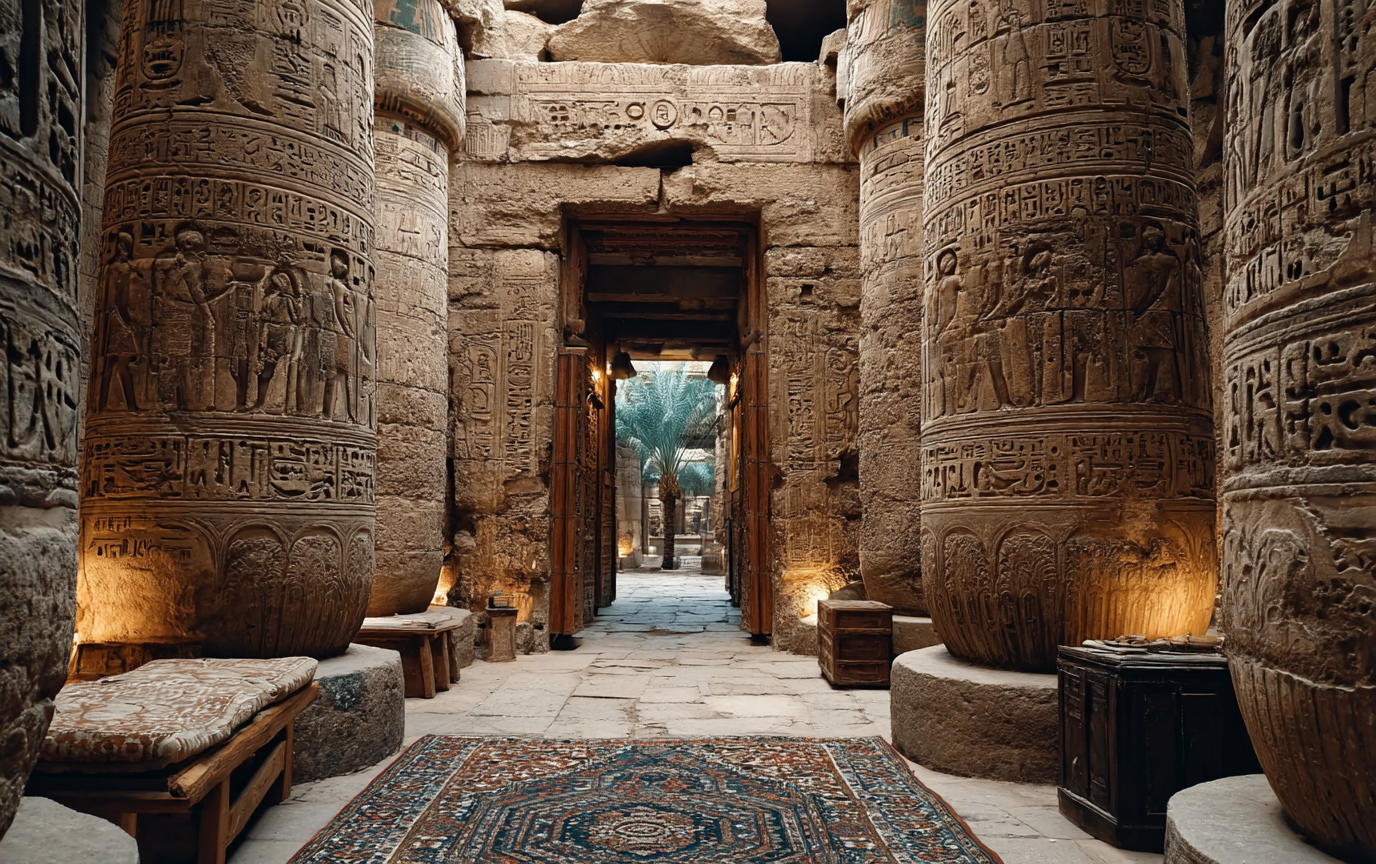Ancient Egypt has always danced in the back of my mind, a vivid tapestry of mystique spun with golden threads of history, art, and spirituality. Every time I catch a glimpse of an ancient artifact in a museum or hear the soft whispers of the Nile as I walk through a sandy street in Cairo, my heart flutters. It’s a culture that resonates deeply, echoing tales of gods, pharaohs, and a civilization that thrived in the cradle of the desert. But why should we immerse ourselves in ancient Egypt today? Because its lessons, art, and stories are ancient yet timeless, offering us insights into humanity that are as relevant now as they were millennia ago.
So grab your metaphorical suitcase, and let’s set out on this adventure of exploring the heart of Ancient Egyptian culture—one that may inspire your next travel plan or enlighten your understanding of one of history’s marvels. Ready? Let’s dive into the deep mysteries of this fascinating civilization, uncovering its intriguing facets along the way.
Unveiling the Fascinating Landscape and Environment
If you’ve ever stood by the mighty Nile, you’ll understand that its banks do more than cradle the water; they breathe life into the very essence of Egypt. Imagine the sun stretching its golden fingers across the lush green fields surrounding the river, while the vastness of the Sahara looms not far away, a stark reminder of nature’s contrasting beauty. Ancient Egyptians revered the Nile as a gift from the gods, often chanting hymns like “Hail to thee, O Nile!” as the waters flooded their lands.
I recall my own visit to Luxor, standing in awe at the Karnak Temple complex, where I felt the sun’s warmth, enveloping me in an energy that seemed to echo the footsteps of ancient priests and pharaohs. You can almost hear the whispering winds carry the conversations of those who once thrived here. The annual flooding transformed the unforgiving desert into a fertile paradise, marking not just a physical renewal but also a cycle of life mirrored in their mythology—death and rebirth, much like the very sands of time.
Considering this geography, the rest of Egypt—both urban and rural—is painted with a palette of stark contrasts, each holding stories waiting to be uncovered. You may find it fascinating that Egyptian civilization blossomed because of these natural elements, making the Nile the lifeblood; without it, the civilization would have surely crumbled.
Spirituality and the Enigma of Beliefs
Let’s wander into the labyrinthine depths of Ancient Egyptian spirituality. Religion wasn’t merely a set of beliefs for the Egyptians; it was intricately interwoven into the fabric of everyday life. Their gods and goddesses danced through daily rituals, embodying elements from the sun to the afterlife. In bustling bazaars, you could almost hear the vendors calling upon the gods to bless their wares or the priests invoking deities with music and incense.
I was struck by an unexpected personal encounter at the Temple of Philae, dedicated to the goddess Isis. The air was thick with reverence, and I watched as a group of local children played amidst the ancient columns, their laughter cutting through the echoes of solemnity. It’s a reminder that while the past is vast, its influence lingers in the air we breathe, in the joy of the young or the wisdom of the aged.
The transition into the afterlife was a critical aspect of Egyptian spirituality—one that was celebrated in grandiose rituals. The mummification process was an art itself, ensuring that the body was preserved for eternity. It is believed that the journey after death mirrored one’s life on earth, a concept steeped in the understanding of morality, justice, and truth, encapsulated in the principle of ma’at.
Art and Architecture: Echoes of Time
If art had a language, it would be that of the Egyptians. The art of Ancient Egypt is like an eternal dance—filled with symbolism and life, conveying stories wrapped in layers of beauty. When I stumbled upon the colorful hieroglyphics in the tomb of Ankh-haf, I felt as though I was conversing with my long-lost ancestors. Each stroke of paint was an emotion, and the meticulous artistry reflected their beliefs and ideologies.
Consider the Pyramids of Giza, standing defiantly against the backdrop of a brilliant blue sky. As I strolled through these solemn giants, I marveled at the mathematical prowess and enduring ambition of a civilization that built monuments still enchanting us today. The Great Pyramid’s symmetrical elegance resonates with the story of an era that believed in the divine connection to the cosmos.
In these structures, art wasn’t merely for decoration but served a purpose—inscribing prayers, honoring deities, and guiding souls into the afterlife. The sheer ambition of constructing a burial site to reflect one’s power and spirituality speaks volumes of how the Egyptians viewed immortality.
The temples and tombs, adorned with intricate carvings and paintings, are windows into the past, granting us access to daily life, rituals, and beliefs. Visiting these sites elucidates a narrative steeped in spirituality and the quest for eternity, awakening a sense of respect and wonder.
The Journey of Discovery Awaits
So, how does one embark on this intimate expedition into Ancient Egyptian culture? The patches of history are scattered across modern-day Egypt, each beckoning you closer to their stories. Museums, archaeological sites, and each grain of sand holds a secret. My experiences have taught me that the key is to embrace the journey with open arms and an eager heart.
Make your way to the Egyptian Museum in Cairo, where treasures of King Tutankhamun gleam and ancient artifacts tell stories of genius and tribute. Or imagine yourself walking through the Valley of the Kings, where tombs whisper about the past, inviting you to explore. Each step here is one towards understanding a civilization that thrived against the odds.
There are countless resources online, like documentaries and historical sites, to help plan your exploration of Ancient Egypt. If you’re passionate about deepening your knowledge, I recommend visiting platforms like World History Encyclopedia or exploring fascinating content on PBS Nova’s Egyptian series that can enrich your perspective.
Conclusion: Take the Road Less Traveled
As we close this journey through Ancient Egyptian culture, it’s evident that this civilization—a culture of fascinating contrasts—is not just a subject for history books but a living entity that continues to teach us about resilience, spirituality, and creativity. The lessons gleaned from its temples, tombs, and tales are as relevant today as they were thousands of years ago, echoing through time and space.
Travelers, the essence of Egypt is all around us, whispering in the winds of the desert and flowing through the Nile. Are you ready to answer its call? Embrace the spirit of adventure; let your heart roam through the lifeblood of a society that once measured time in star-studded nights, temples, and sacred stories carved in stone.
Hopefully, as you delve into the mosaic of Ancient Egyptian culture, you’ll find inspiration not just in its depths but also in your own journey through life. Discover more about these incredible threads of connection by diving into various facets of travel and culture.
Want to stay updated on the latest travel tips? Check out our Travel Tips section: Travel Tips! Looking for lifestyle inspiration? Explore our Lifestyle category, and discover amazing destinations! Connect with us on YouTube, or follow our adventures on Instagram and Pinterest.
Boost your adventure with these guides:
- Best Budget Destinations in Asia for 2025
- How to Learn Basic Local Phrases Fast
- How to Pack for a Month-Long Trip in One Bag
- How to Eat Healthy While Traveling Abroad
- How to Book Pet-Friendly Hotels Easily
And remember, may your adventures be filled with wonder and discovery!













